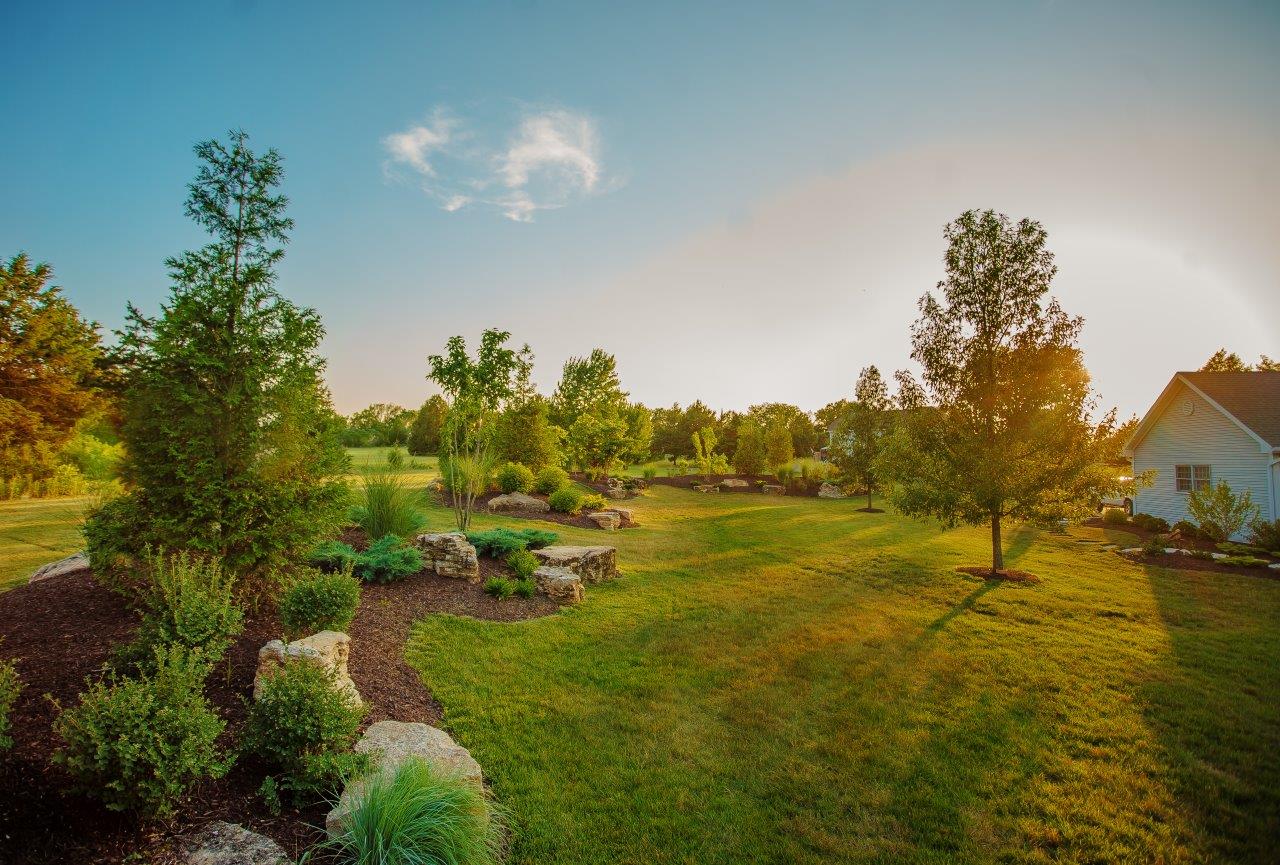

Berms are a raised area of the landscape that can add height and variety to an otherwise flat or dull area. Generally, they are raised 18-24” high with soil then taper down to the natural ground level. The slopes should be gradual in order to look more natural and prevent erosion. Usually, berms are built to be used as a focal point, privacy or noise screen or a way to redirect drainage where needed. While there are no strict rules when building a berm there are a few guidelines to consider.
Even if the purpose of your berm is to be a focal point or privacy screen, it’s important to take drainage into account because you are changing the contours of your property. Berms can be used to help redirect water in tricky spots but if used incorrectly, water could dam up and lead to more problematic wet spots. It is always best to consult a professional if you are unsure how your berm will affect your drainage.
We recommend designing berms in curved shapes. I like making berms that are asymmetrical for a more natural look but be sure to keep a wide radius on curves to make mowing around them easier. They can have more than one mound height as the variations in height can create a lot of visual appeal. However, we recommend not centering your highest peak.
Planting a berm is different than planting the front of your house, in that the house is the backdrop for your plantings. When planting the front of a house, I would typically recommend planting larger shrubs close to the house, then smaller plants in front to build layers and add depth. Building layers is still key to planting a berm, but now the larger plants are the backdrop. Because of this, I always recommend using a variety of heights of plantings. Don’t be afraid to mix in larger plant materials to create that backdrop. When possible, I always suggest incorporating a few trees. If the main function of the berm is to create privacy, you may plant even more trees. When it comes to the shrubs, I like planting in masses, and using waves of color. This prevents the area from looking too sporadic, but also keeps the area looking natural. I also love to add boulders in berms to add another layer of interest, texture, and natural aesthetic.